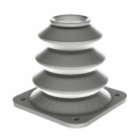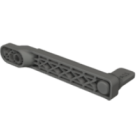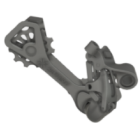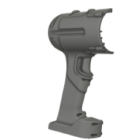Tolerances for 3D printing
In the world of traditional manufacturing, engineers are used to tight tolerances, often in the range of microns. But in 3D printing, expectations need to be adjusted. Tolerances — the acceptable amount of dimensional variation between CAD and final printed part — play a pivotal role in part functionality, especially when designing interlocking or mechanical components.
Knowing how much clearance to leave, how different technologies behave, and how to plan for shrinkage or post-processing is key to designing 3D-printed parts that fit and perform as intended.
What is tolerance in 3D printing?
Tolerance refers to the allowable deviation from the intended dimensions in a printed object. It’s particularly important in assemblies, moving parts, snap-fits, or mating components, where even a fraction of a millimeter can affect fit or movement.
Because 3D printing is an additive process, each layer introduces slight variations — due to temperature, material flow, mechanical limitations, or powder behavior (in powder-based systems). This means tolerances in 3D printing are often wider than in subtractive methods, and they depend heavily on the printer, material, and environment.
Standard tolerance ranges by technology
Different 3D printing technologies offer varying levels of accuracy and repeatability. Here’s what you can typically expect:
- FDM/FFF: from +/-0,15 mm to +/-0,3 mm, often more for large parts or low-end printers,
- SLA/DLP: ±0.1–0.2 mm, with great detail but potential for warping in larger parts,
- SLS: ±0.2 mm or ±0.3%, with good isotropy and no support-induced distortion,
- MJF: Similar to SLS, but slightly better uniformity in dimensions,
- DMLS/SLM (metal): ±0.1–0.2 mm, though shrinkage compensation must be planned,
- PolyJet: ±0.1 mm or better, suitable for detailed, high-accuracy models.
These ranges are typical — not absolute — and can vary depending on part size, geometry, machine calibration, and post-processing steps.
Designing with clearance in mind
If you’re designing parts that must fit together, clearance is just as important as tolerance. Without adequate spacing between surfaces, printed parts may fuse, rub, or simply not fit at all.
As a rule of thumb.
- Use at least 0.2–0.4 mm of clearance for SLS/MJF,
- For FDM, start with 0.4–0.6 mm, especially for larger prints,
- For SLA, 0.1–0.2 mm may be enough, but parts may swell due to resin curing,
- When in doubt, test fit with a tolerance test print for your printer-material combo.
Keep in mind that tolerances accumulate across assemblies — so if two parts each vary by ±0.2 mm, their combined variance can affect alignment significantly.
How to improve dimensional accuracy
While some level of variation is inevitable, there are strategies to improve results:
- account for shrinkage and warping in materials like PA12 or ABS,
- calibrate your printer regularly — especially axes and material flow,
- orient your part strategically to minimize overhangs and shrinkage zones,
- use tolerance test models (like sliding cubes or snap-fit benchmarks) to find your machine’s “real-world” performance,
- post-process when necessary — such as sanding, reaming, or machining to reach final fit,
Summary
Designing for tolerance is a critical part of engineering success with 3D printing. No matter how advanced the technology, parts will always have some level of dimensional variation. By understanding the expected tolerances of your printing method and planning clearances into your designs, you’ll avoid assembly frustration, failed fits, or time-consuming reprints.
Proper tolerance planning isn’t just about precision — it’s about reliability, repeatability, and smarter design from start to finish.
Explore also
- How to design for 3D printing?
- How big can 3D printers print?
- 3D printing overhangs
- What is resolution in 3D printing?
- Wall thickness 3D print
- Support 3D print
Related categories













